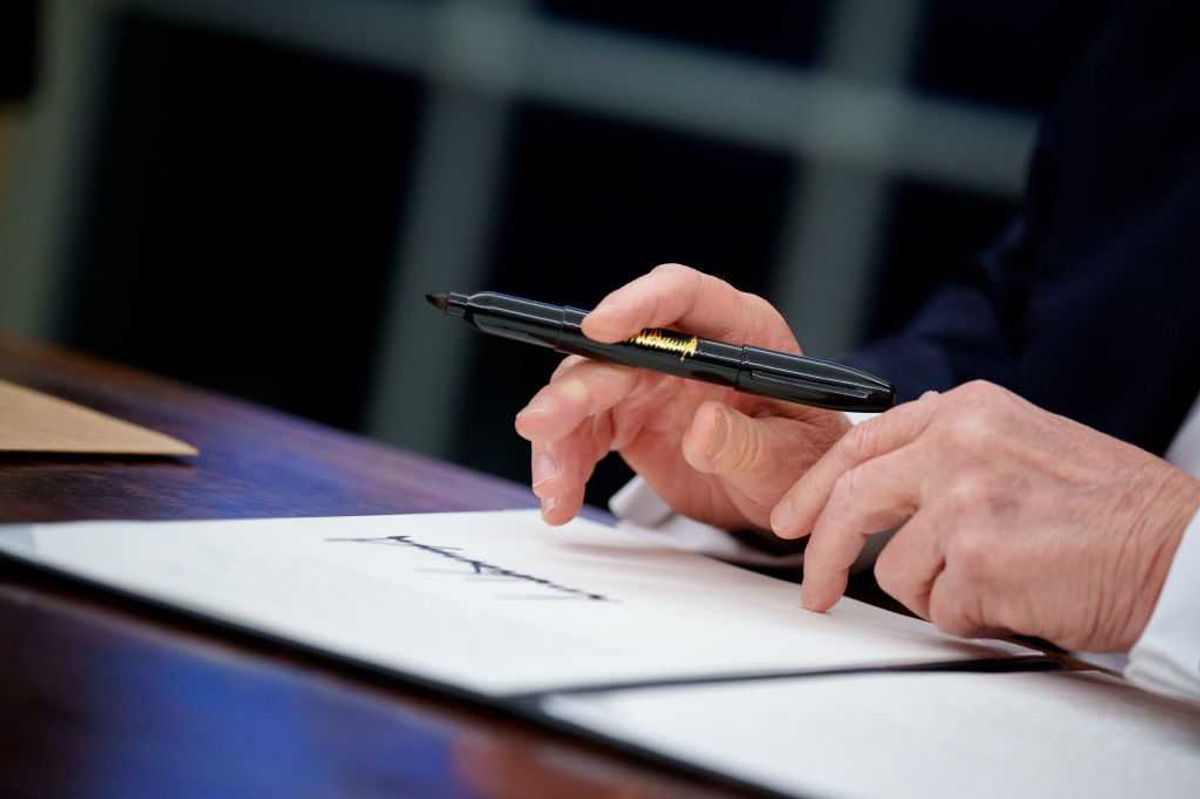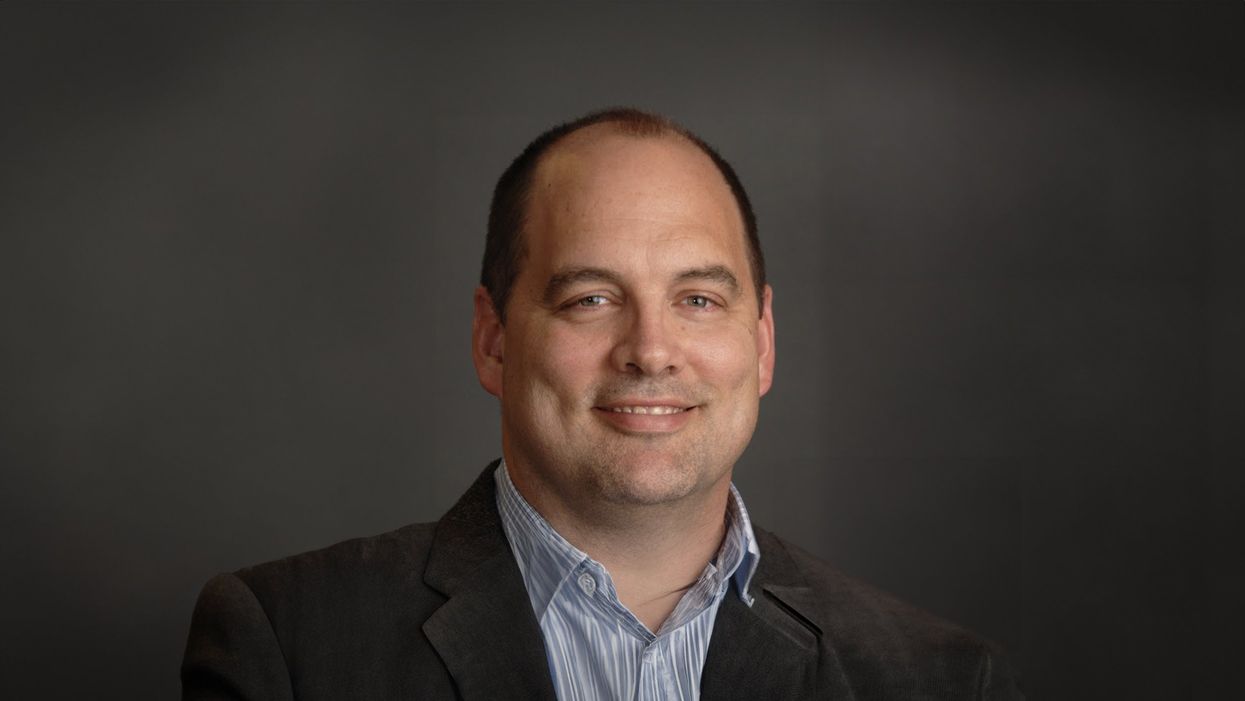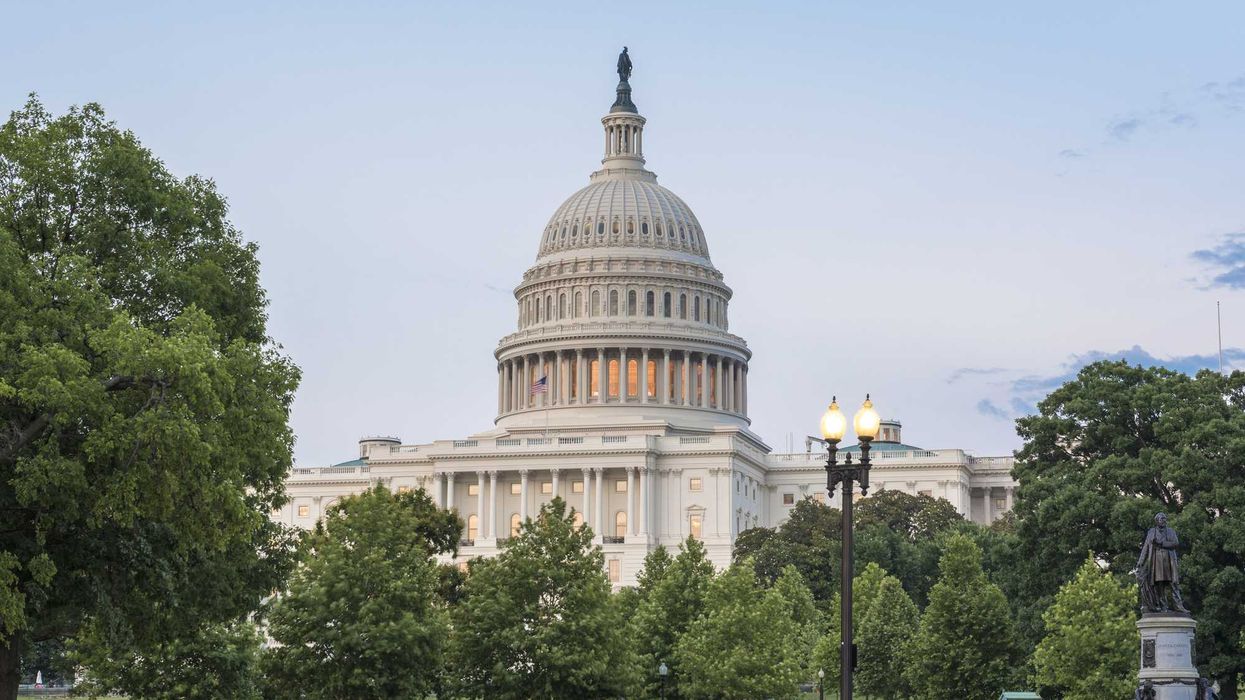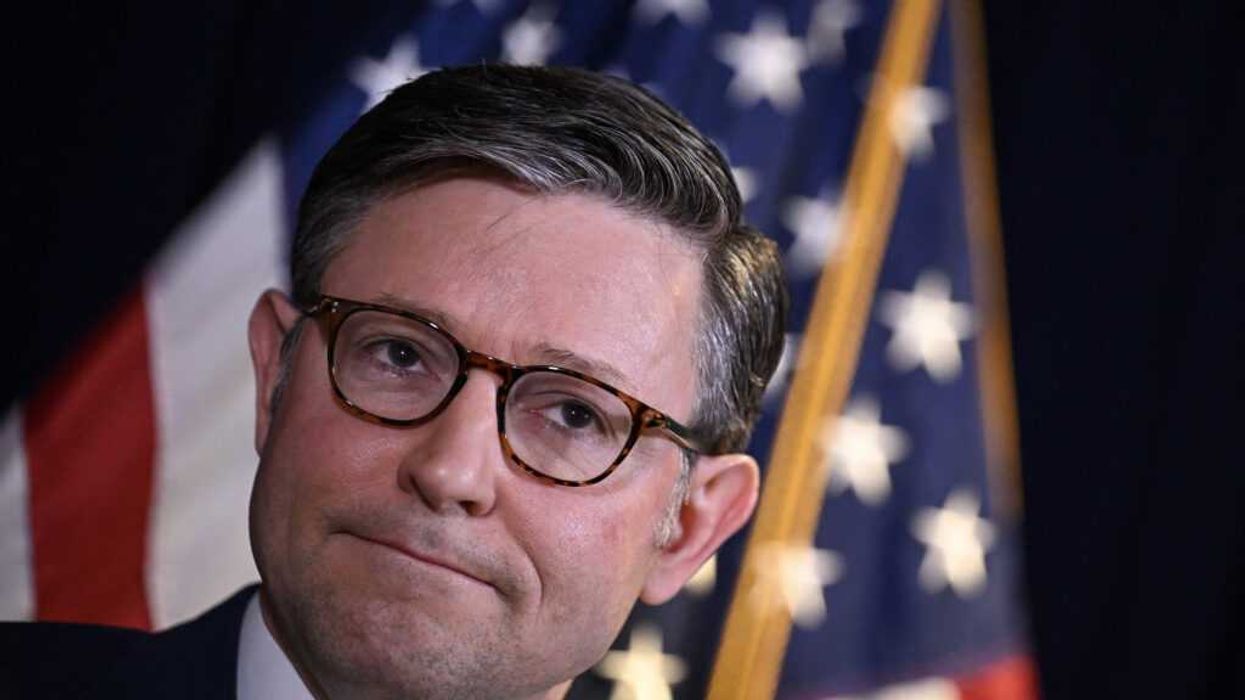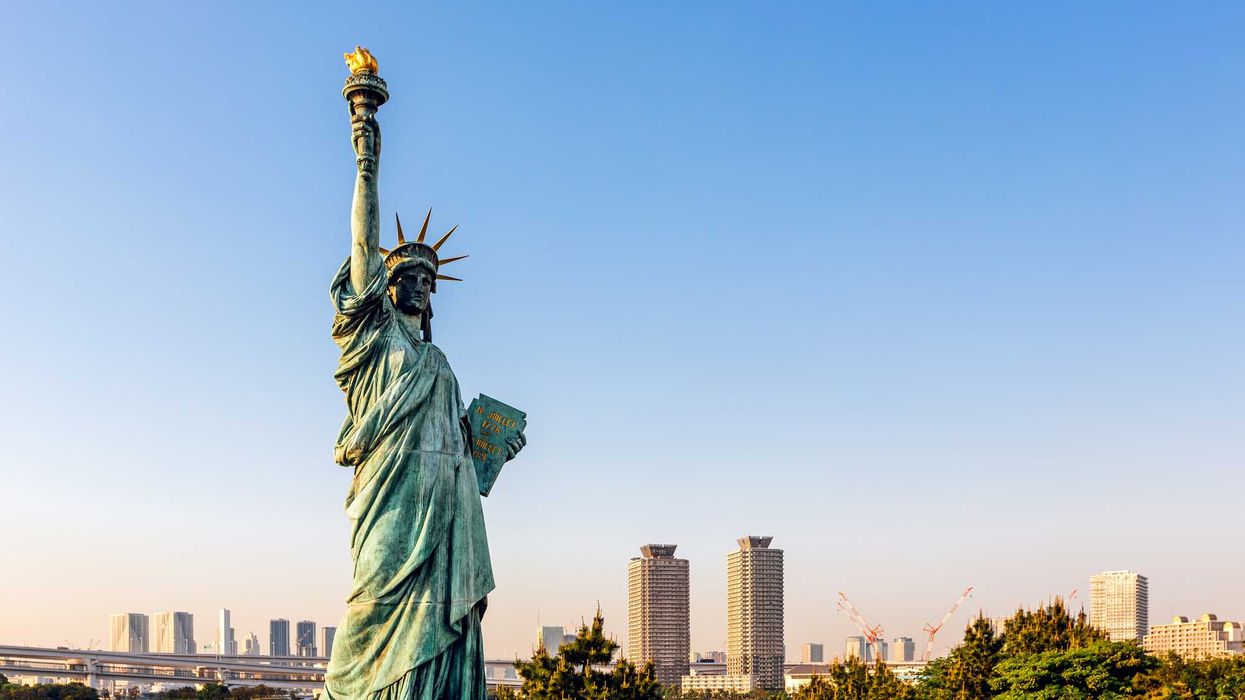Berman is a distinguished fellow of practice at The Harry Frank Guggenheim Foundation, co-editor of Vital City, and co-author of "Gradual: The Case for Incremental Change in a Radical Age." This is the ninth in a series of interviews titled "The Polarization Project."
The problem of polarization has been on Daniel Stid’s mind for a while.
Trained as a political scientist, Stid has spent time working in government (as a staffer for former Rep. Dick Armey), business (at Boston Consulting Group) and the nonprofit sector (at the Bridgespan Group). But Stid is perhaps best known for founding and leading the Hewlett Foundation’s U.S. democracy program. From 2013 to 2022, Stid helped give away $180 million in grants to combat polarization and shore up American democracy. Since leaving Hewlett, he has created a new organization, Lyceum Labs, and launched a blog, The Art of Association, where he writes frequently about civil society and American politics.
In all of these settings, Stid has argued for taking an expansive view of American democracy. “Democracy is the means through which we resolve our political disputes and determine what government does,” he wrote. “But to reduce democracy to politics … is to see only part of it. Such a truncation ignores the extent to which democracy in America is ultimately grounded in and supported by our civic culture.”
The strength of American civic culture was the subject of a conversation I had with Stid. Has there been a hollowing out of American civil society? What role have foundations and nonprofits played in fueling polarization? Are we heading toward a new civil war? These are just a few of the topics covered in the following conversation, which has been edited for length and clarity.
Greg Berman: You are a few years removed from your time at Hewlett. I'm wondering how you reflect on your experience there. It seems like you were ahead of the curve in identifying polarization as a threat to U.S. democracy. But in all candor, I can't honestly say that I think things are better today than they were in 2013, when you started.
Daniel Stid: Fair enough. My term at Hewlett, from 2013 to 2022, was certainly not the best days for democracy in America. My overall assessment is that even though we were rowing the boat and making some headway, but a strong tide was pulling us out to sea.
I think both Larry Kramer, who was the foundation's president, and I had a realistic conception of how our system of government is meant to work. Elections bring forth new majorities and new leaders. There's always a lot of hollering and horse trading, but new policies are eventually produced that are responses, in aggregate, to the problems facing the country.
When we started in 2013, we felt that that process had broken down and that, until that was fixed, the problems our country was facing were not going to be solved. I think that was a fair assessment. I think we were early to spot the problem. And yet, we still failed to size it up properly and appropriately. We said at the time we were starting that if we didn't get this process back on track, in 20 or 30 years time, the country would be encountering very strong headwinds. We were off by an order of magnitude because it was only two or three years later that the country was really reckoning with those headwinds. [Editor’s note: Hewlett was an initial funder of The Fulcrum.]
GB: Did your thinking change in the aftermath of Donald Trump’s election in 2016?
When we were starting, Tea Partiers like Ted Cruz had shut down the government
DS: I think there were three things in particular that we did not understand initially. In the fall of 2013, when we were starting, Tea Partiers like Ted Cruz had shut down the government for three or four weeks to try to get President Obama to defund Obamacare. That was the hyper-partisan, ideologically framed conflict that made us say, "This is the problem: The bipartisan space for policymaking has really completely eroded."
Very early on, we decided to pressure test our strategy. We got a lot of good feedback. One thing we learned was that the problem was much deeper than we supposed. It was less about polarization amongst our political elites and more about a growing body of activated citizens on the poles who were picking up cues from elites.
This was quite obvious on the right, but over time, it became clear that this pattern was happening on the left, too. I think the Trump phenomenon, the populist phenomenon, is clearly something that doesn’t, at present, have an analog on the left, but the partisan antipathy and feelings of disrespect and contempt clearly exist on both sides. We realized that we were thinking about things too narrowly and too rationally. So the first learning was: The problem of polarization is much more complicated and based in psychology and irrational impulses than we originally suspected.
I think the second thing that I came to understand — and in fairness, Larry Kramer might disagree with this — was that polarization was not just an American problem. Initially I thought this was an exceptionally American challenge, but as we came into 2016, and we were looking at this in a comparative perspective, we saw Brexit in the U.K., the National Front in France, the reaction to the influx of immigrants and the rise of the AfD in Germany. … Very similar strains of populist thought were emerging. It had different expressions in different places, but a range of things, including globalization and immigration, were generating a populist backlash.
At the same time, we were not seeing reasonable responses from the center-left. There’s been a hollowing out. There's a great Irish political scientist, Peter Mair, who wrote a book called “ Ruling the Void,” which is really looking at what happens in liberal democracies when political parties and intermediating structures like unions and churches are hollowed out. I think that's a pattern that we've seen in lots of places. So the second learning was that this was less of an exceptionally American problem and more something that post-industrial democracies in a lot of places, at least in North America and Europe, were grappling with.
And the third learning for me was that, over time, I became increasingly skeptical about what I would call "if only" solutions, which are things like nonpartisan redistricting, or open primaries, or campaign finance reform, or proportional representation, or citizens’ assemblies. There was this sense in the field that if only we could impose those kinds of solutions systematically, then somehow the problem of polarization would be solved. By 2015, I was really deeply skeptical of this idea, primarily because of the sheer challenge of trying to do implementation on a state-by-state basis. The idea that there would be some kind of a big national bill to do this never struck me as practical.
GB: At some point, you said that the goal of your grant program at Hewlett was to improve public perceptions of Congress. In retrospect, was that the right goal? Do you feel like you made progress toward that goal?
DS: In retrospect, that goal was too narrow. I think that modest and limited goal was what we started off with, but we had basically moved on from it by 2017.
When we started, public approval of Congress was below 10 percent. Unlike executive approval, congressional approval almost never rises above 50 percent. But if you look at the periods of time when American government was working best, you see approval ratings fluctuating between 35 and 50 percent. And so that seemed like a reasonable bellwether to us.
One thing that's worth noting is that we wanted to go out of our way to establish that we were doing this on a nonpartisan basis in a field where there's a lot of frankly partisan actors. And so we, I think, erred on the side of having a goal that was more about the process than about specific policy outcomes. But we got feedback early on that said, "This seems like pretty thin gruel. Are you aiming high enough?”
When we started, I don’t think we felt the need to articulate that the program wasn’t just about getting Congress working better again. It was about restoring the importance of pluralism, the rule of law, free and fair elections, and all of that. After the election of 2016, we realized those were the things that were now at stake, and we tried to articulate more clearly the goals we were trying to achieve.
GB: Since you left Hewlett, you have offered some targeted criticisms of philanthropy. Walk me through how you think philanthropy could improve.
DS: I think philanthropy has changed pretty profoundly, at least in the democracy and civic life space, since Trump came down the escalator. To quickly sketch out the context, when we first started funding in 2013, there was roughly a billion dollars a year going to support democracy, more or less. This year, there is likely to be upwards of three billion.
The other big change is that philanthropy is really politicized. Several funders in the center that were, like Hewlett, intentionally and openly prepared to work with people across the political spectrum, have exited. A number of funders that had been in the center-left have moved sharply to the left. And some funders on the right, after Trump came on the scene, have broken further to the right. More and more funders now see themselves as having effectively taken a side, whether it's resisting Donald Trump or supporting efforts to combat the administrative state.
Whatever the political framing is, the foundations are increasingly joined to the party coalitions. I think that is a huge problem. Much of what people call “strengthening democracy,” particularly on the left, is really just an effort to support the Democratic Party and its candidates. Not that people in philanthropy are breaking the law, but they aren't really serving the spirit of it in terms of the ban on electioneering.
Even before Trump came on the scene, there was generally a boom-and-bust cycle to philanthropy in this area. You tend to see a lot more giving to democracy in an election year. There's far less long-term funding. Organizations working on longer-run change efforts that aren't trying to impact the next election have a harder time attracting funding. That’s a shame because I think philanthropy is really bad at shifting near-term political outcomes, but it is uniquely positioned to shape longer-run developments and ideas.
GB: In a similar vein, you've also been a gentle critic of the nonprofit sector. My sense is that belief polarization is a problem at a lot of nonprofits. Does that jibe with your experience?
DS: It's a huge, huge problem. Belief polarization within organizations that leads to these organizations being less effective in pursuing their professed goals is a much bigger problem on the left than the right, mainly for sociological reasons. The people at foundations and NGOs are almost always overeducated. They spend a lot of time marinating in hermetically sealed environments.
I was really struck by the story you told in your book about Darren Walker and the backlash after he said that New York City should build decentralized jails to replace Rikers Island. I think that kind of thing is happening below the surface at a whole bunch of organizations. And not just at the Ford Foundation, but also at more mainstream or even nonpartisan organizations, especially related to questions of race and racial equity.
I think one of the reasons for our current political impasse is this phenomenon of the “ shadow parties ” that Ruy Teixeira and John Judis have put their finger on. I think this is a phenomenon on both the left and the right. You've got these networks of media, NGO activists, foundations, think tankers and policy wonks that are effectively pulling both parties out to the hyper-partisan poles, and making it harder for them to get back to the middle ground where they can start winning over the median voter.
I think philanthropy is particularly implicated in this phenomenon. The different entities that comprise these shadow parties are all underwritten by philanthropy. Philanthropy isn't just one among several participants, they're bankrolling most of the elements of the so-called shadow parties.
GB: There’s an argument that maybe nonprofits don’t need to worry about being too radical, that their job is to move the Overton window.
DS: The one thing I would say to a nonprofit or philanthropic or civil society intermediary about why we should be concerned about polarization is that if we're trying to realize our vision of a good society, we are going to need ultimately not just a narrow majority, but a sustained Madisonian majority for that. And we're much more likely to be able to build up to that if we cast the widest possible net for potential allies. And the way we can ensure we're casting the widest possible net is to be listening to people who disagree with us. Because if we're listening to people who disagree with us, then we're almost certainly going to be better allies and a safer harbor for the people who may not be a hundred percent on board with us, but are closer to us than those who disagree with us.
GB: We're in an election year, which brings with it all sorts of passions. As you look to the remainder of this year, how worried are you about the potential for political violence in the U.S.?
DS: For actual physical shooting, rioting, beating people up? I'm less worried about that, and I think there actually has been some progress.
If I can back up, this is another area where my thinking has really evolved. As it happens, a couple of grantees that we were supporting at Hewlett, in particular Rachel Kleinfeld at the Carnegie Endowment for International Peace, started flagging that there were things afoot in the U.S. that would seem to be empowering groups disposed to violence. This was in the years 2017, 2018 and 2019. Rachel had sent me her early writings on political violence, and my thinking was, "I'm not quite sure this is a huge issue, but if you think it is ..." In retrospect, of course, it was a huge issue, and thank God someone had been thinking and doing work around that before 2020.
I remain skeptical about the "next civil war" hypothesis. I think that is something that is very convenient for conflict entrepreneurs on the left and on the right to invoke. Certainly when you have someone like Donald Trump and the forces that he's encouraging in the mix, that always brings a whiff of violence. But in terms of malicious people challenging the election results, I think there's actually a massive deterrent effect occurring. Seemingly every day, there's two or three more people from Iowa or Idaho or Mississippi or California or New Hampshire going to jail because of what they did on January 6th. I think that sort of thing sends a strong signal. Now, obviously, if Trump is re-elected and proceeds to systematically pardon and free all of those people, that is definitely a mixed message. But at least for now, I'm not expecting to see a large group of people rallying to challenge the 2020 election.
To me though, the issue is more that there is a diffused climate of threats and intimidation. I've been talking with a lot of state and local elected officials across the country, and these are really public-spirited people, from both parties. And it's something all of them are encountering in new and more intense ways. It's often associated with online vitriol—the death threats and the intimidation. And in some cases people have had to have enhanced security. I think it bears more heavily on women. It bears more heavily on people who are different, whether it's racial minorities or those with a different sexual orientation. It bears more heavily on them, but I think it is really throughout the system.
Have you ever read “ The Field of Blood ” by Joanne Freeman? She’s a historian at Yale and she looks at Congress in the run-up to the Civil War. It's a really powerful book, and one of her main points is that there were these outbreaks of violence. In the most famous instance, a senator was nearly caned to death on the Senate floor. But what really comes through in the book is that violence was part of the subtext of everything. People would be walking past colleagues who everyone knew had knives under their coats. That kind of intimidation within legislative bodies is corrosive. And I think, over time, thanks to the online world, that kind of thing is now much more diffused. ... I guess what I'm trying to say is I may be less alarmed about the immediate physical threats of violence and civil war, but more alarmed about the diffusion of a political setting in which people feel at liberty to make death threats and undermine everyone’s sense of security, not least the people in elected office.
GB: How closely are you following what's going on on campus now and the reaction to the war in Gaza?
DS: I follow it. I've gotten to know the people at FIRE and Heterodox Academy and others, like Eboo Patel and Interfaith America, that are working to try and open up dialogue in higher ed. It should be possible to say that the attack on Oct. 7 was an outrage and at the same time be able to say that the humanitarian crisis visited upon the Palestinian people, both by Hamas and by Israel's response to Hamas, is also an outrage. But there doesn't seem to be, in my mind, a lot of nuance on campus. I think the threats and the extent to which people are actively shutting down or endeavoring to intimidate groups on campus feel like a naked form of illiberalism.
GB: Much of what has happened at Harvard, where you got your PhD, has played out over social media. My instinct is that social media has helped to drive division, but I haven’t been able to find good research that supports this idea.
DS: I got on Twitter around 2010, and I left it for reasons I won't bore you with here, but my mental health and physical health and everything else dramatically improved.
There are scholars who have shown that rates of polarization tend to be much higher among older Americans, who are the least likely to be online. And so my view is that what social media does is serve as the glue that holds together the partisan media outrage complex. I think the signals that are emanating from other parts of that complex, whether it's television or friend networks and the like, is what does the damage. I don't think social media is driving the underlying distrust. I think the Twitter thing in particular is an elite phenomenon. The vast majority of Americans aren’t on Twitter. Twitter is the way that elites speak to each other in dumbed-down ways. But the cues that elites send to their followers can do a lot of damage.
GB: What's giving you hope? Where are the sparks of light for you these days?
DS: I actually think all over the country, you're seeing the emergence of locally situated, community-based activity. Often it isn't described as democracy or bridge-building or depolarization, but it is just healthy communal activity. The more that we can try to solve this problem away from the thunderdome of national politics, the more I think we can make headway. I think the solutions to polarization are likely to be found in Ingham County, Michigan, or Paducah, Kentucky, or Fresno, California.
So that's where I'm really focusing my time and energy now—on trying to lift up those solutions. That’s also why I'm focusing on political leaders at the local and state level. Because I think there's many more impressive and encouraging stories at that level than if you're sitting around talking with members of Congress, who are so beleaguered and worn out.
I think you're also seeing the emergence of a handful of philanthropic initiatives that are focused explicitly on tackling longer-run challenges in a scrupulously nonpartisan or nonpolitical way. There's the New Pluralists collaborative, which is really focusing on the underlying culture and community dimensions of our democracy and our civic life. The Trust for Civic Life is focused on trying to strengthen civic life in small town and rural America. The Trusted Elections Fund is an effort to bolster the mechanisms of elections, not so much for this year, but to provide longer-run support for strengthening elections over time. Those I would see as notably countervailing efforts to what is in general, I think, an increasingly polarized and politicized philanthropic field.
This article originally appeared on HFG.org and has been republished with permission.




